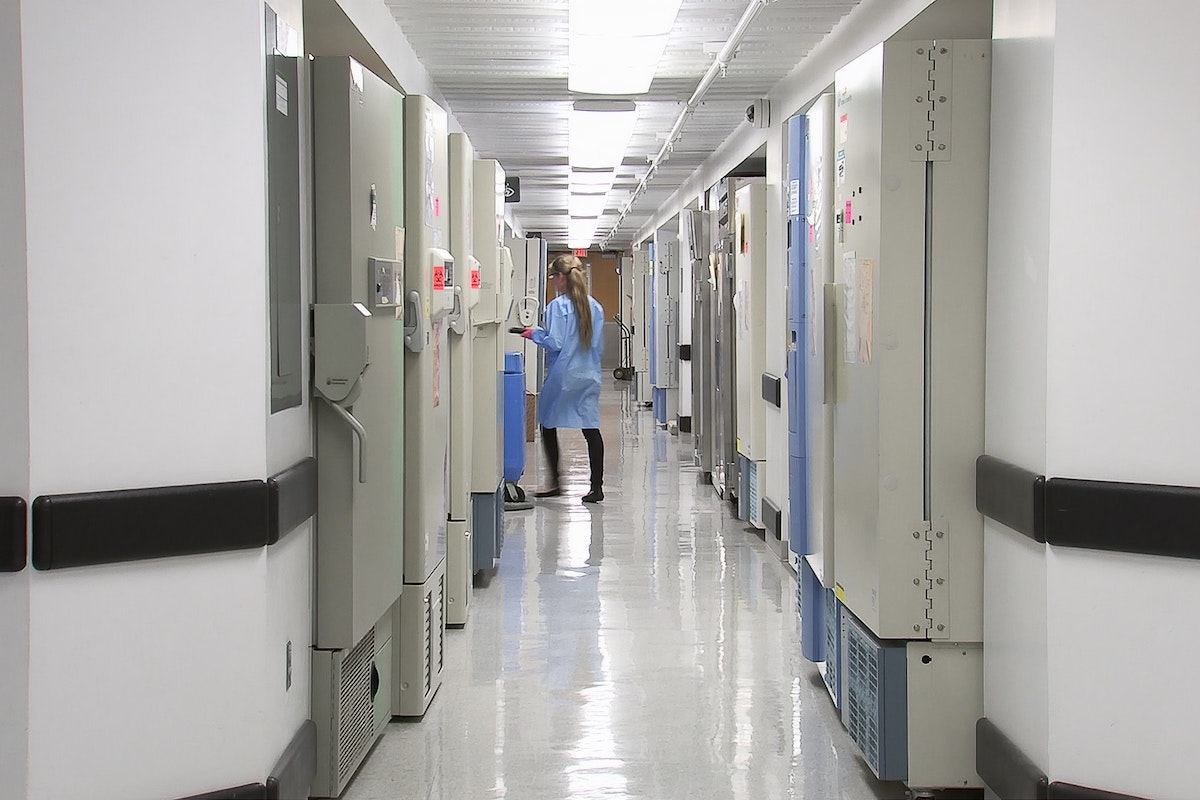Health
A Contrarian View of Digital Health
Sending millions more people to clinicians, creating a society even more fearful of lurking diseases, and systematically robbing people of the normal arc of life and death–this, I am afraid, is where the digital health expansion is heading.

“The pursuit of health is a symptom of unhealth.”
—Petr Skrabanek
Picture Jim from Kentucky. A farmer, tall, Peterbilt hat. Just retired. He takes basic meds for high blood pressure and diabetes. Arthritis slows him but he has no cardiac symptoms. He plays cards, goes fishing and hangs out with his grandkids.
Jim’s family bought him a smart watch, so he could improve his health. The watch kept telling him that his heart rate was low. Jim called his family doctor, who arranged an urgent cardiology visit.
Jim’s electrocardiogram showed occasional premature ventricular contractions (PVCs). His cardiologist worried because PVCs can indicate trouble. Jim tried to reassure his doctor, saying, “I feel well.”
The cardiologist insisted on further testing. One of the scans—known for its propensity for false-positives—showed an abnormality. So Jim, the asymptomatic happy man who met the cardiologist because of a smart watch, had a near-normal coronary angiogram—a test that requires placing a catheter in the heart.
Soon after the procedure, Jim stopped talking, his face drooped and he could not move the left side of his body. The catheter had disrupted a plaque that caused a stroke.
The stroke neurologist tries to help him. Months later, Jim makes slow progress in a nursing facility.
While social media amplifies anecdotes of “saves” from personal health devices, real-world clinicians understand two truths from Jim’s case: it is hard to make a person without complaints better and interacting with healthcare comes with risks.
In the 1970s, Ivan Illich, a philosopher, wrote a book called Medical Nemesis (1974). Illich’s thesis was that medicine had become a major threat to health. His bombastic prose and eccentric personality made his ideas easy to dismiss at that time. Yet now, with the expansion of the medical-industrial complex, including “personal” health devices, Illich’s ideas deserve another look. Could he have been prescient?
Illich described three ways the medical establishment has brought harm, or iatrogenesis, to society. Jim’s case illustrates the first type of iatrogenesis: direct clinical harm. But Illich taught that direct clinical iatrogenesis is not the worst form of harm. The expansion of digital health will endanger society in more pernicious but devastating ways.
One is a social iatrogenesis in which medical practice causes illness by encouraging people to become consumers of preventive therapies. H. Gilbert Welch, professor of medicine at the Dartmouth Institute for Health Policy and Clinical Practice, calls this “anticipatory medicine.” Welch observes that when we treat people with symptoms, we do so because patients are asking for our help. In anticipatory medicine, patients are being told they need our help.
Much of the digital health movement centers on anticipatory medicine. Smart watches capable of recording the heart’s rhythm are, essentially, massive disease-screening programs—akin to the blue and pink cancer campaigns.
An empirical look at the evidence supporting anticipatory medicine is sobering.
In 2015, three Stanford researchers systematically studied all the published trials of screening for deadly diseases and found “reductions in all-cause mortality with screening tests were very rare or non-existent.”1
Genomics, another form of digital health, looks equally dubious. Professor Christopher Semsarian from Sydney Australia recently wrote that “sequencing the genomes of people who are well and asymptomatic has great potential to do more harm than good.”2

Semsarian explains that sequencing a human genome in a healthy person can identify up to 12 potentially harmful DNA variants. That knowledge would surely induce further testing and unnecessary worry. Thus, every person who has their genome sequenced becomes a patient.
Use of genomic data looks no better for therapeutics. When Francis Collins boldly predicted at the turn of the century that we will see a complete transformation in therapeutic medicine in the next 15 to 20 years, he was wrong. This is not surprising given that the lifestyle diseases of today—obesity, diabetes, and cardiovascular disease—are linked to hundreds of gene variants, which taken together explain tiny fractions of the variance.3
And despite the many promises of precision oncology, two formal studies, including a randomized control trial, have failed to show tumor sequencing approaches (searching for genomic alterations in cancerous cells and then targeting them with specific chemicals) have any advantages over conventional therapy.4, 5
Longevity data confirm the failure of anticipatory medicine: The CDC website includes graphs on average lifespans. No matter the category, the age at death has not budged over the past 15 years. In fact, for some categories, lifespan has actually decreased in the past two years.6 But worse is this stat: while deaths from cancer and heart disease have plateaued since 2000, deaths from dementia and Parkinson’s disease have risen greatly.7
Finally, Illich believed medicine’s greatest sin was a cultural iatrogenesis—an indirect sickening power or a health-denying effect. He thought that true health required adaptation. Healthy people adapt to ageing, to healing when damaged, to suffering and then to the peaceful expectation of death. But medicine’s metastasis into culture has dire consequences:
By transforming pain, illness, and death from a personal challenge into a technical problem, medical practice steals the potential of people to deal with their human condition in an autonomous way and becomes the source of a new kind of un-health.8
The tragic paradox of today is that gains from technology allow people to live with more illnesses, but this “progress” also prevents the normal adaptations of aging. Clinicians rarely say an elderly person suffers from old-age; rather she has diseases X, Y and Z.
James Marcus, a former editor of Harper’s magazine, recently wrote of his dad’s end-of-life spiral in the New Yorker. At age 89, his father, a retired physician scientist, had become a “bundle of maladies.” Frailty led to falls and subdurals, then craniotomies, nursing home stays, delirium, pneumonias, and then death. Hospitals and nursing homes overflow with scenarios exactly like this.
Digital health offers no relief from Illich’s cultural iatrogenesis—it may even make it worse. That reality raises existential questions. Irish gastroenterologist Seamus O’Mahony writes in his latest book, Can Medicine be Cured?: The Corruption of a Profession (2019), that “medicine no longer knows what it is for.” O’Mahony asks good questions: Is the aim of medicine, or digital health, to keep the entire adult population under permanent surveillance? Does longevity trump all other considerations? What if we won the war on Cancer? And, what about the relief of suffering?
Sending millions more people to clinicians, creating a society even more fearful of lurking diseases, and systematically robbing people of the normal arc of life and death–this, I am afraid, is where the digital health expansion is heading.
As a doctor on the frontlines of healthcare, the beginnings of digital health look ominous.
References
1 Saquib N et al. Does screening for disease save lives in asymptomatic adults? Systematic review of meta-analyses and randomized trials. International journal of epidemiology 2015; 44(1): 264–77. doi:10.1093/ije/dyu140.
2 Semsarian C. Genome sequencing for sale on the NHS. BMJ 2019; 364: l789. doi:10.1136/bmj.l789.
3 Joyner MJ, Paneth N. Promises, promises, and precision medicine. J Clin Invest 2019; 129(3): 946–948. doi:10.1172/JCI126119.
4 Tourneau CL et al. Molecularly targeted therapy based on tumour molecular profiling versus conventional therapy for advanced cancer (SHIVA): a multicentre, open-label, proof-of-concept, randomised, controlled phase 2 trial. The Lancet Oncology 2015; 16(13): 1324–1334. doi:10.1016/S1470-2045(15)00188-6.
5 Eckhardt SG, Lieu C. Is Precision Medicine an Oxymoron? JAMA Oncol 2019; 5(2): 142–143. doi:10.1001/jamaoncol.2018.5099.
6 National Vital Statistics Reports Volume 67, Number 5 July 26, 2018, Deaths: Final Data for 2016. : 76.
7 Divo MJ et al. Ageing and the epidemiology of multimorbidity. Eur Respir J 2014; 44(4): 1055–1068. doi:10.1183/09031936.00059814.
8 Illich I. MEDICAL NEMESIS. The Lancet 1974; 303(7863): 918–921. doi:10.1016/S0140-6736(74)90361-4.






